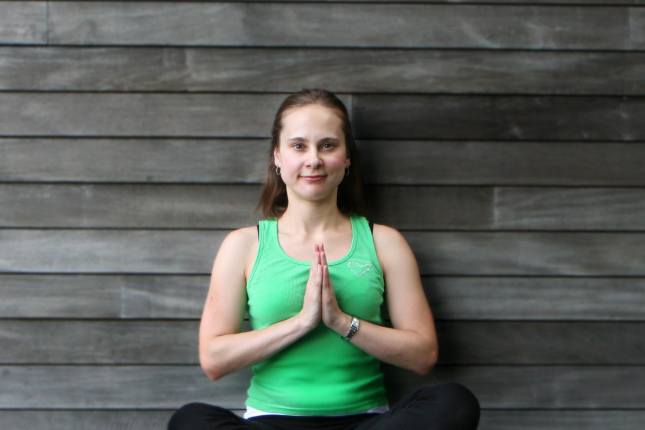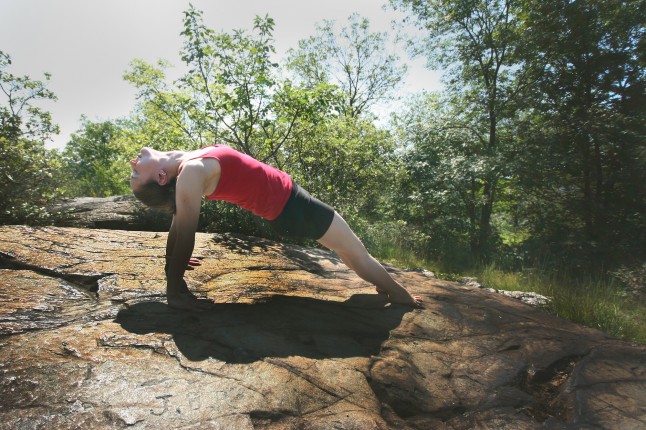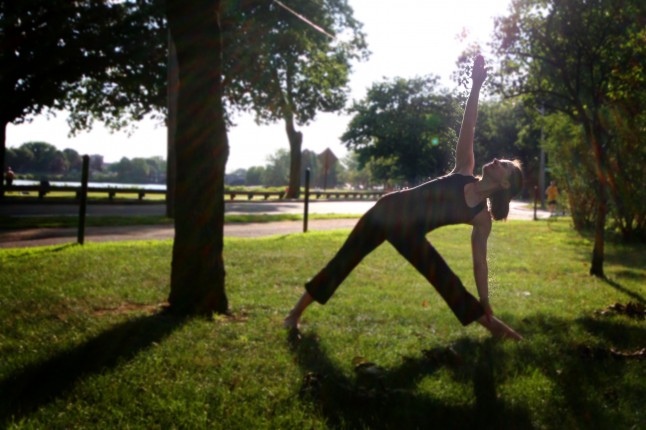About Elizabeth
Yoga is an inquiry. Each time we practice yoga, we demonstrate our devotion to setting aside time for stillness. Away from the incessant noise and unrelenting pace of the outside world, we can truly listen to ourselves.
Like many people, I came to yoga seeking physical benefits. Years of running had left me with very tight hip flexors that were starting to cause me back pain and knee problems. Yoga helped with these problems—but that was just the beginning.
Yoga introduced me to an entirely new way of relating to my body. I learned that exercise could be nourishing rather than punishing.
Yoga brought a new level of body awareness. With practice, I mastered instructions that had sounded impossible at first. (“You want me to move WHAT body part?”)
Gradually, I became more open to the idea that yoga could have emotional benefits, too. This started when I noticed that my insomnia disappeared on days when I had taken a yoga class. Later, I came to view yoga as a tool for processing difficult emotions. My yoga mat became a laboratory for discovering feelings I didn’t know I had.
I believe that yoga offers an alternative to the predominant “guilt and shame” culture, in which we view ourselves as intrinsically flawed and spend our lives mired in perfectionism, joylessly trying to make up for what we lack. One of the fundamental principles of my teaching—grounded in yoga philosophy—is that each of us is perfect as we are. Our practice—and, for that matter, life—is an exercise in revealing that perfection, like polishing a precious jewel. For me, yoga is a spiritual, as well as a physical and emotional, practice. In my group classes, I offer students this perspective, but am mindful that not all students will agree with me or be interested in this aspect of yoga.
As a student, I was drawn to the Iyengar method’s clarity and precision, and you will find this in my classes as well. Instead of flowing from pose to pose, we linger long enough for reflection: make an adjustment in the pose, and observe the effect. We pay careful attention to alignment, and adaptations are offered for various physical challenges and body types. Some styles of yoga primarily build strength; others focus on flexibility. My classes cultivate both, as well as balance (both literal and figurative).
The path to becoming a certified Iyengar yoga teacher is long, and I am currently on it. I completed a two-year teacher training program in Boston with Patricia Walden and Peentz Dubble, spent a year and a half apprenticing with Jarvis Chen, and study with Lisa Hajek, Faith Russell, and Chris Saudek in Wisconsin. I passed the first level of assessment (Intro I) in 2013 and plan to take the exam for full certification (Intro II) in 2015. These studies have greatly enriched my teaching. In addition, see a list of trainings I have completed.



